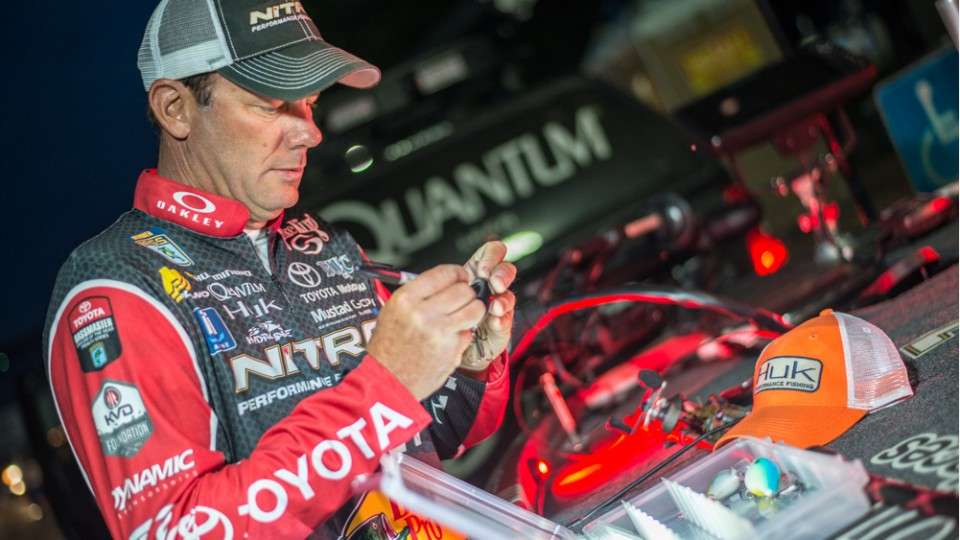
I’m getting a lot of questions about the crankbait strategy I used to win at Toledo Bend last week.
A lot of questions are about my system which was an integral part of my success. My rods (Quantum KVD Tour cranking 7-11 and 7-10), reels (KVD Tour and EXO 200) and line (XPS Fluorocarbon) made me extremely efficient at fishing those deep-running Strike King 6XD, 8XD and 10XD crankbaits.
But there was more to it than casting and winding. I was doing a lot of subtle things to help me catch the fish that I did.
The first two days were easier, but the tournament became a real grind and the fish became harder to make bite the last two days. I had to make repeated casts to the same area and change baits to make it happen.
The fish weren’t feeding aggressively so I had to find ways to make them bite. If I saw baitfish and bass on my Humminbird graph, I’d keep hammering the same spot; there were times I’d cast for 20 minutes before I could get the school fired up.
Boat position, line sizes and lure depth control were equally critical. I always want my crankbait running slightly deeper than the depth the fish are using. For example, if the fish are in 19 feet, I want a bait that gets to 20 feet but not one that dives to 25. If you use a bait that runs much deeper than the bottom, you lose the triggering qualities because the lure isn’t able to perform the way it was designed.
I can control that with boat positioning, casting distance and line size. Crankbaits run deeper on longer casts and lighter line, so I adjusted accordingly to make sure the lure is hitting the key zone and running slightly deeper than the bottom.
I had several different rods rigged with various line sizes for the each of the XD crankbaits I was using. I also had those baits in silent and rattling versions.
For example, I had a 6XD rigged on 12- and 17-pound line in silent and rattling, an 8XD with 14 and 17 and a 10 XD with 16-pound fluorocarbon.
I also alternated colors based on the forage base in the area I was fishing, the water clarity and the sky conditions. Remember that a lure looks different at 18 or 25 feet than what it does near the surface. Just because it’s dark or dirty doesn’t mean you have to use a chartreuse bait. Bass have no problem finding and eating natural looking forage at that depth.
During the early morning or on windy days I used the sexy blue back herring but when it was brighter and calm I’d use the bar fish color.
I rotated the silent and rattling versions, too. My first option was the rattling version, but after the bite slowed, I’d switch to the silent crankbait and often got the school fired up again.
Speed is another factor. I’m always experimenting with speeds, cranking faster at times or slower at others, paying close attention to which speed triggered the bites.
I also ran my HydroWave on the schooling pattern with a 30-second delay and kept the volume between 2 and 4, depending on the wind. There were several times that I caught a fish when the schooling pattern kicked in after the delay; I’ve seen that throughout my fishing career.
Sure, there are days when you can cast a crankbait on a ledge and blast a good limit in a hurry. But the angler who factors in all of the subtleties will enjoy more success on those days when fishing is tough.
It’s all about the attitude!
Kevin VanDam’s column appears weekly on Bassmaster.com. You can also find him on Facebook, Twitter and Instagram.

